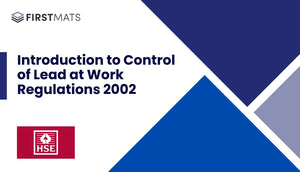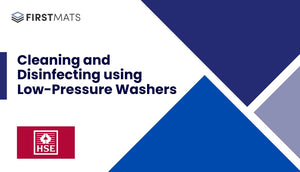Article Index:
Executive Summary: Work-related Skin Disease Statistics, 2023
The following executive summary breaks down key findings from the HSE Report on ‘Work-related Skin Disease Statistics, 2023’. The statistics shed light on the ongoing issue of skin conditions originating from occupational exposure.
Annual Average of 7,000 New Self-reported Skin Problem Cases
Page 5 of the HSE Report reveals an annual average of 7,000 cases of self-reported skin problems caused or exacerbated by work, as reported by the Labour Force Survey between 2018/19 - 2022/23. Considering only cases serious enough to seek dermatological attention are accounted for, this figure is likely an underestimation.
Prevalence of Work-Related Skin Problems in the Labour Force
Data sourced from page 6 reveals an estimated 15,000 workers reported having skin problems they believe were caused or worsened by their job, as per the Labour Force Survey data collected between 2020/21, 2021/22, and 2022/23.
1,016 New Cases of Work-Related Skin Diseases in 2019
The Health and Occupation Reporting (THOR) network estimated that in 2019, 1,016 new cases of work-related skin diseases were identified by dermatologists. This figure was found on page 7.
Contact Dermatitis Mainly Affects Women and Young Workers
Of the 876 cases of contact dermatitis diagnosed in 2019, as seen on page 8 of the report, 58% were women. Furthermore, 55% of those cases reported to THOR were women under 35, compared to 41% of men.
Post-Pandemic Decline in Reported Cases
On page 11, the HSE Report shows a significant drop in contact dermatitis cases reported from 2020 onwards due to the impacts of COVID-19, reducing to an average of 280 new cases per year over 2020 to 2022 compared to 915 cases per year over the previous period from 2017 to 2019.
Decline of Contact Dermatitis Cases Over the Past 12 Years
Page 12 of the report reveals that the estimated annual incidence change in contact dermatitis was larger in the last 12 years at -7.8%.
'Soaps and Cleaners' and 'Wet Work' Main Causes of Dermatitis
As seen on page 15 of the report, 'Soaps and Cleaners' and 'Wet Work' are the most commonly reported causes of contact dermatitis according to dermatologists.
Occupations with Higher Rates of Dermatitis
As reported on page 15, occupations with higher incidences of dermatitis include beauticians and related work (75.4 cases per 100,000 workers per year), cooks (68 cases per 100,000 workers per year), and hairdressers and barbers (50.9 cases per 100,000 workers per year).
Increase in Dermatitis Cases Among Nurses
An increase in the proportion of total reported dermatitis cases was observed among nurses during the 2020-22 period, rising to 19% from 12% in the previous decade (2010-19), as reported on page 16.
Human Health and Social Work Activities Account for 41% of Cases
As detailed on page 16, ‘Human health and social work activities’ accounted for 41% of total cases reported during 2020-22, likely influenced by hygiene measures introduced during the coronavirus pandemic.
Conclusion
The HSE's report on 'Work-related skin disease statistics, 2023' shows an ongoing issue of work-related skin conditions, with notable increases in certain sectors, like healthcare. However, there has been a notable downward trend in the incidence of contact dermatitis over the last 12 years, though caution is advised due to the varying impact of underreporting and the complications introduced by the coronavirus pandemic.
The data makes it clear that more will need to be done to reduce the incidence of these conditions in the workplace.







